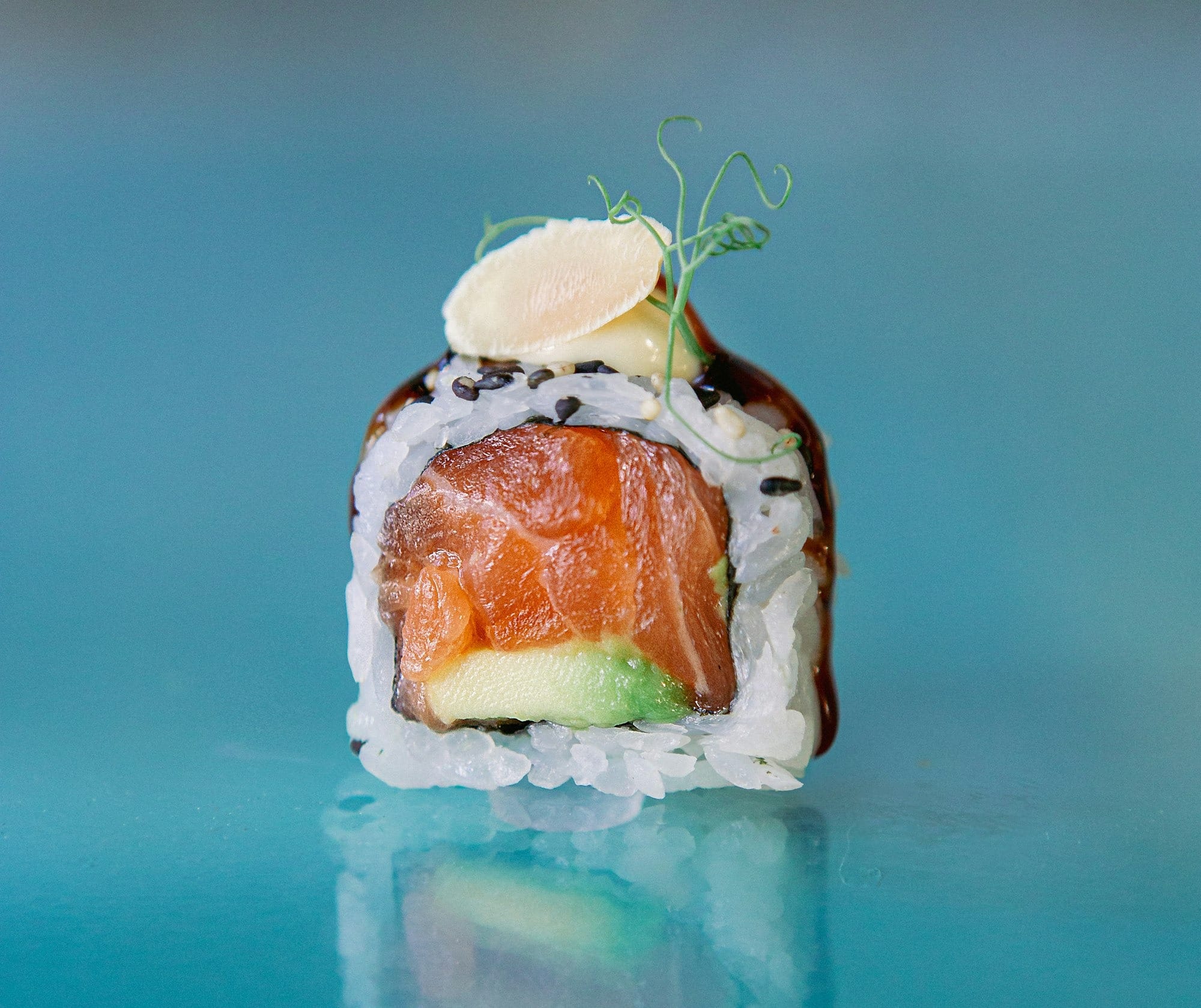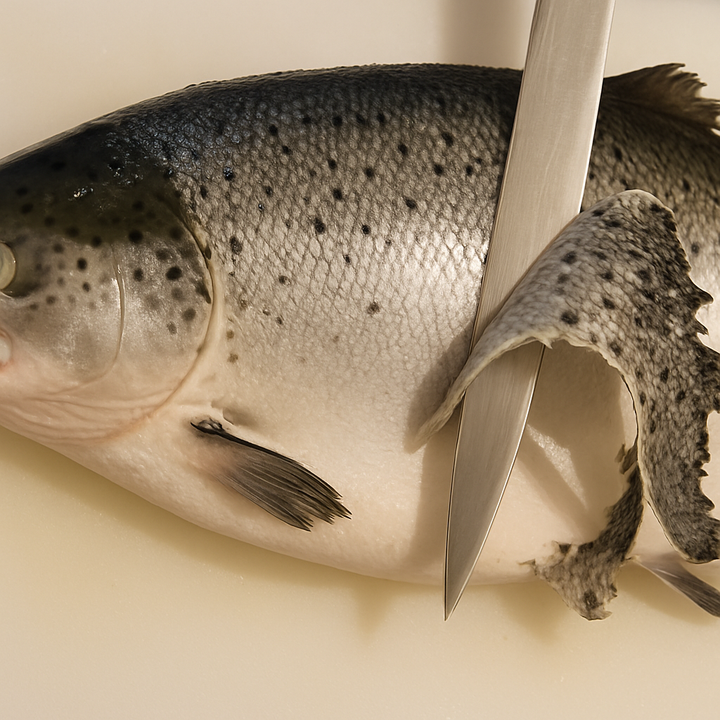Sushi 101: A Guide to Types, Traditions, and Global Variations
Understanding the world of sushi and explore its seven core types—Nigiri zushi, Makizushi, Chirashizushi, Inarizushi, Sushi Rolls, Oshizushi, and a variety of regional specialties—each delivering a unique and unforgettable experience.

Sushi, a harmonious blend of tradition and flavor, is an experience that showcases the skill of the chef and the appreciation of the diner.
Equip yourself with the knowledge to understand this art form in depth.
Core Types of Sushi
Japanese sushi is classified into seven primary types, each offering unique flavors and experiences. These include Nigiri zushi, Makizushi, Chirashizushi, Inarizushi, Sushi Rolls, Oshizushi, and a variety of local specialties.
1. Nigiri Zushi (Nigiri Sushi)

This iconic sushi features fresh fish or other toppings placed on hand-pressed vinegar rice. Unique variations include:
- Caramelized Salmon Sushi: Originating in China, this sushi features salmon topped with caramelized sugar, giving it a crispy texture. Many restaurants enhance it with sweet mayonnaise for a milder flavor.
- Beef Sushi: A modern take with raw or slightly seared beef paired with condiments like wasabi, garlic, or even truffles. The umami of seared beef complements the vinegared rice perfectly.
2. Makizushi (Maki Sushi)

Makizushi rolls are wrapped in seaweed and divided into several subtypes:
- Hoso-maki (Thin Rolls): Featuring simple fillings like cucumber, tuna, or fermented soybeans. Examples include Kappa Maki (Cucumber Roll) and Tekka Maki (Tuna Roll). A characteristic detail is the presentation: some rolls are cut into squares, others into circles, depending on tradition.
- Futo-maki (Thick Rolls): Packed with multiple ingredients like shiitake mushrooms, spinach, and egg omelets. Kansai rolls often use un-toasted nori for easier handling.
- Chu-maki (Middle Rolls): These smaller, more manageable rolls blend the simplicity of Hoso-maki and the complexity of Futo-maki.
- Saiku-maki (Decorative Rolls): Crafted for aesthetic appeal, these rolls are designed to resemble flowers, patterns, or family crests.
- Temaki (Hand Rolls): Cone-shaped and filled with ingredients, these rolls are perfect for casual, hands-on dining.
3. Sushi Rolls

Popular outside Japan, sushi rolls adapt to local tastes. Famous examples include:
- California Roll: Avocado, cucumber, and imitation crab.
- Philadelphia Roll: Cream cheese, smoked salmon, and asparagus.
- Rainbow Roll: A vibrant medley of avocado, tuna, and salmon.
- Spider Roll: Fried soft-shell crab with spicy mayo.
- Mango Roll: Shrimp tempura wrapped in mango slices.
These creations demonstrate the global evolution of sushi, integrating ingredients like teriyaki chicken, mango, and even chocolate. Some rolls, like the Sushirrito, fuse sushi with burrito-style hand-held convenience, while others, like the Miss Pink Roll, incorporate sweet elements like strawberries.
4. Chirashizushi (Chirashi Sushi)

Chirashizushi presents vinegared rice topped with assorted ingredients. Regional variations include:
- Kanto Style: Bold cuts of seafood like tuna and squid are placed over warm vinegared rice.
- Kansai Style (Bara-zushi): A mix of rice and toppings like shrimp, eel, and vegetables. The luxurious Okayama Bara-zushi is particularly famous for its elaborate preparation and abundant ingredients.
5. Inarizushi (Inari Sushi)
Simple yet versatile, Inarizushi combines vinegared rice stuffed into sweet, fried tofu pouches. Regional shapes and flavors vary: straw bag-like in the Kanto region and triangular in Western Japan.
6. Oshizushi (Pressed Sushi)
This layered sushi is pressed into molds for a compact presentation, often featuring vinegared mackerel or salmon.
7. Regional Specialties
Each region in Japan boasts unique sushi styles:
- Masuzushi from Toyama: Vinegared rice topped with trout and wrapped in bamboo leaves.
- Funazushi from Shiga: Fermented crucian carp sushi, a traditional nare-zushi.
- Pacific Saury Bozushi from Kumano: Whole saury laid over rice and slightly pressed.
Understanding Sushi Beyond Tradition
Nigiri vs. Sashimi
While often confused, the distinction lies in the rice. Nigiri pairs fresh fish with vinegared rice, whereas sashimi is raw seafood served alone with condiments like soy sauce and wasabi. Both prioritize freshness, but their preparation and presentation differ significantly.
Hand Rolls vs. Sushi Rolls
Hand rolls (Temaki) are cone-shaped and eaten directly with hands, ideal for casual settings. Sushi rolls (Makizushi), on the other hand, are cylindrical, cut into bite-sized pieces, and often require chopsticks.
Global Adaptations and Innovations
Sushi Rolls Outside Japan
Sushi rolls have seen an explosion of creativity worldwide:
- Sushirrito: A fusion of sushi and burritos, featuring large, hand-held rolls filled with diverse ingredients.
- Miss Pink: Strawberries and rice wrapped in a crepe, emphasizing dessert-like sweetness.
- B.C. Roll: A Canadian favorite with grilled salmon skin and cucumber.
Evolving Ingredients
Non-traditional ingredients like chicken, arugula, and even chili peppers redefine sushi’s possibilities. Rolls like the Dynamite Roll (tempura shrimp with spicy mayo) and Yam Roll (tempura yam drizzled with creamy sauce) cater to diverse palates.
Musubi Sushi: The Portable Evolution
Introduced in 2024, Musubi Sushi merges onigiri and sushi elements. Made with red vinegared rice and crispy seaweed, it offers convenience without compromising flavor.
Cultural Tips for Enjoying Sushi
- Respect Edo-style Traditions: Avoid ordering non-traditional toppings like natto at traditional Edo-style sushi restaurants.
- Timing Matters: Eat sushi rolls quickly to preserve the texture of the seaweed.
- Sashimi Care: Refrigeration and freezing guidelines ensure safety, especially for fish prone to parasites like Anisakis.
Regional Delicacies and History
Chirashi-zushi’s Evolution
The Kanto-style Chirashi-zushi emphasizes bold presentation with raw fish toppings, while Kansai’s Bara-zushi integrates ingredients into the rice. Historically, these variations highlight regional preferences, with Kansai’s dish often used for celebrations due to its elaborate preparation.
Inarizushi’s Simplicity
Originating in the Edo period, Inarizushi’s simple composition allows chefs to innovate with subtle flavoring differences. Its portability and ease of preparation make it a popular choice for casual dining.
Sushi Rolls and Beyond
From California to Alaska, sushi rolls have taken on new identities. The Philadelphia Roll’s use of cream cheese exemplifies Western influences, while the Rainbow Roll’s colorful array of fish showcases creativity. These adaptations keep sushi relevant and exciting for global audiences.
Closing Thoughts
Sushi is a culinary art that transcends borders, blending age-old traditions with modern creativity.
Whether you prefer the elegance of nigiri, the artistry of decorative rolls, or the bold flavors of global adaptations, sushi offers something for every palate.
Explore these diverse forms and savor the perpetual evolution of this iconic cuisine. With knowledge as your guide, dive into the world of sushi and elevate your dining experience to new heights.


